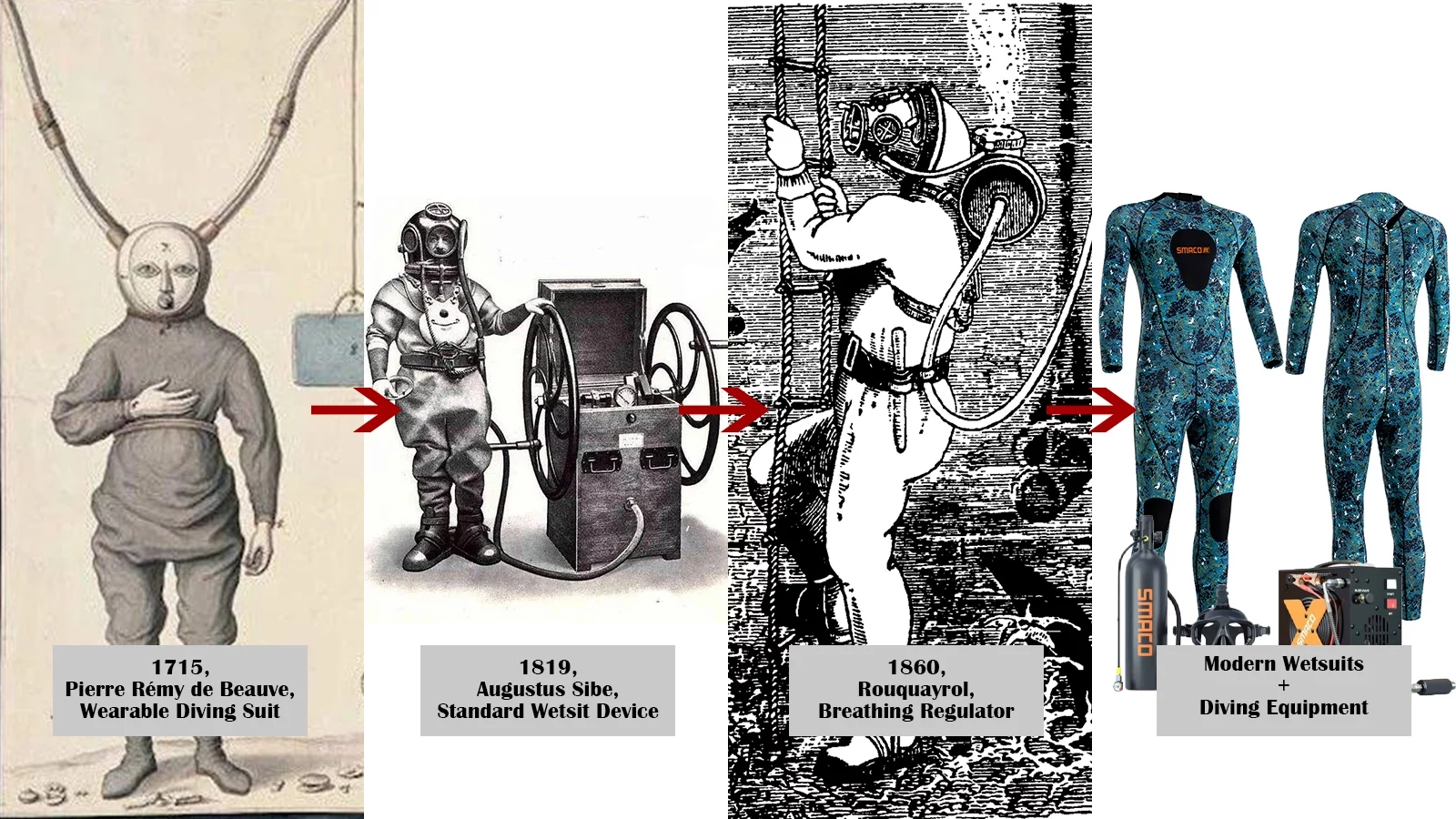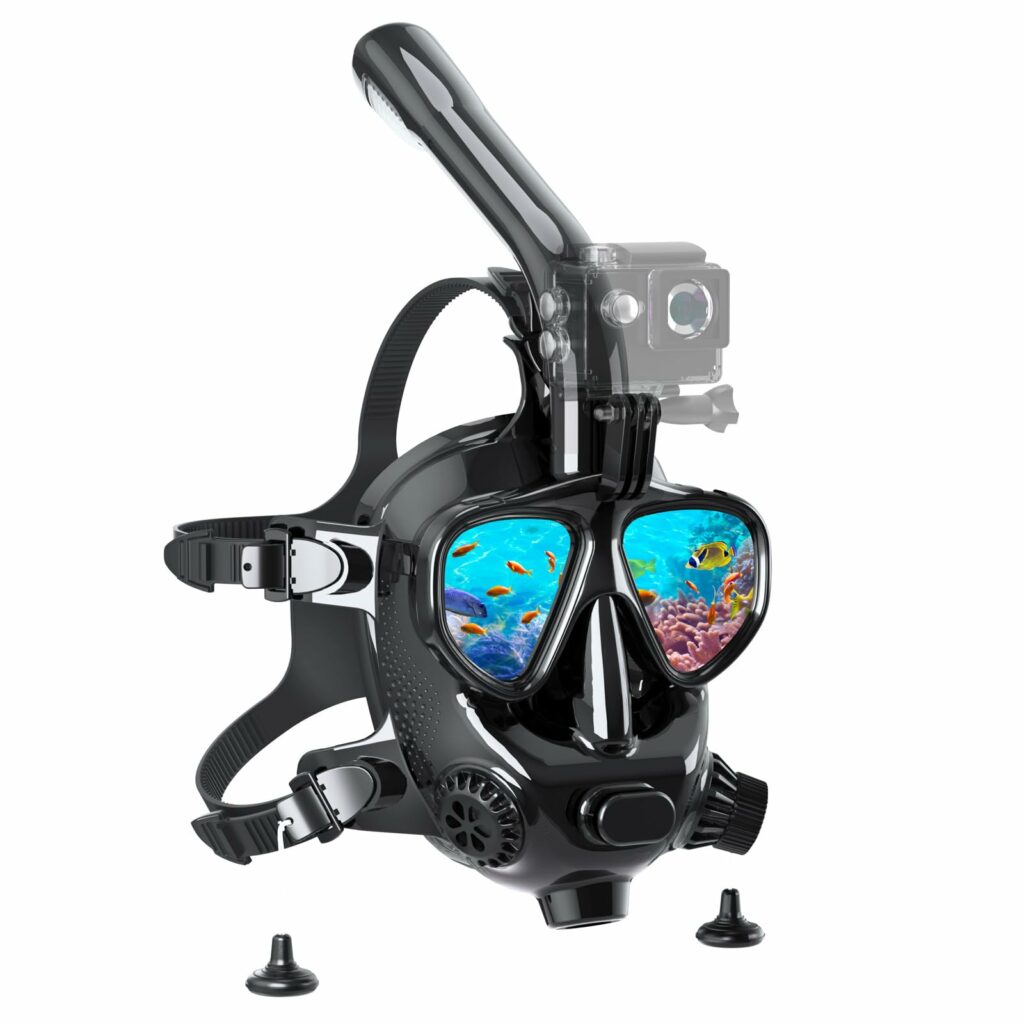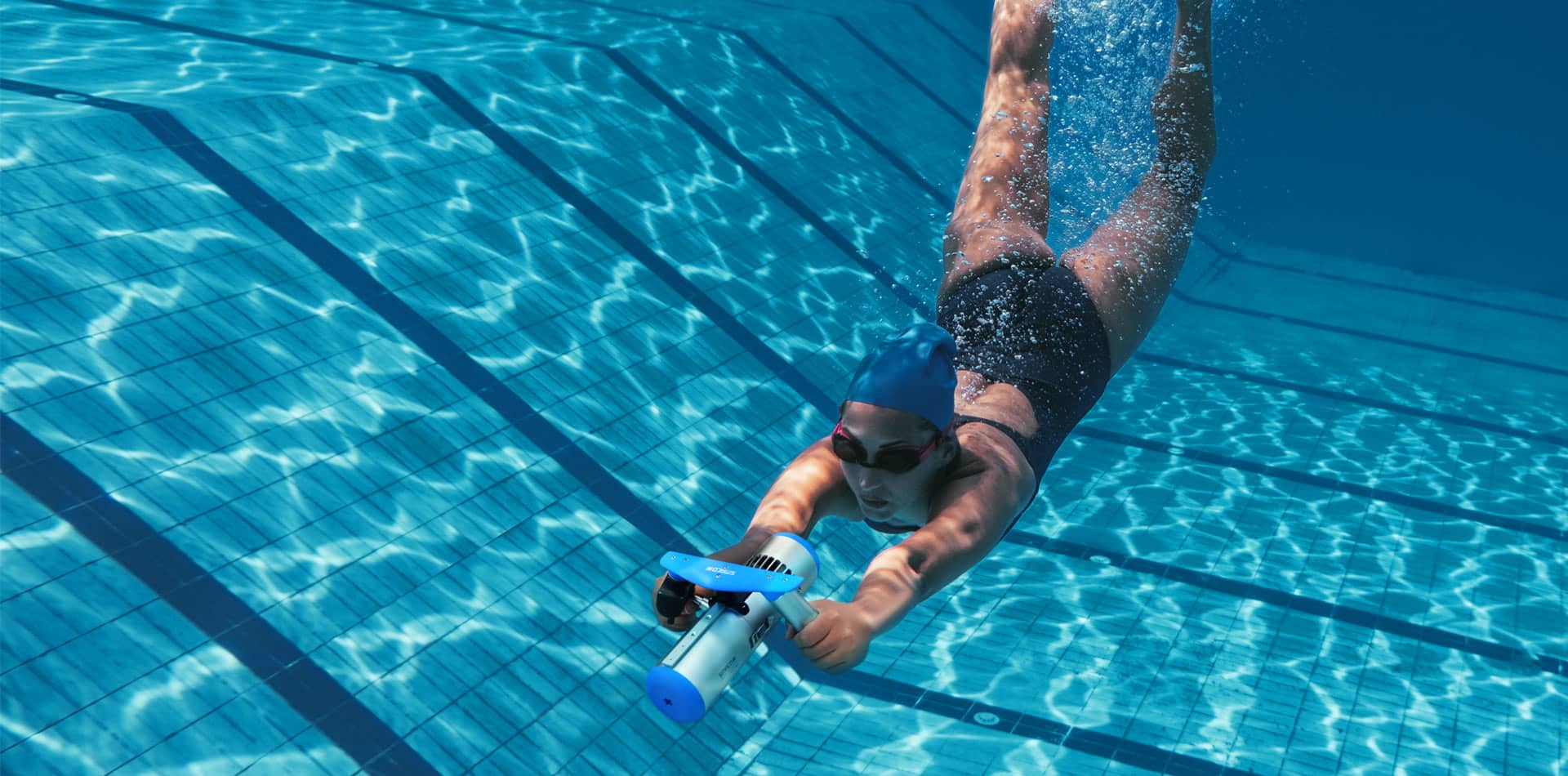Blog
Do you understand the origin of scuba diving?
Diving, as a sport that explores the underwater world, not only reflects humanity’s historical symbiosis with the oceans but also showcases the fusion of technology and the spirit of adventure. From ancient times, when people dove to gather marine resources, to modern days, where scuba diving has evolved into a globally popular leisure activity, this journey has been marked by innovation and exploration. This article delves into the origin and evolution of diving.

The emergence and application of diving in ancient times
The emergence and application of diving in ancient times Human exploration of the sea dates back more than 2,700 years to ancient China. During that time, diving primarily took the form of free-diving and was driven by survival needs. These activities were mainly applied in areas such as fishing, military operations, construction, and exploration.
Fishing:
The Ancient Greeks were among the earliest to adopt free-diving as a method for harvesting seafood. They developed rudimentary diving tools, including nose clips and leather bags, to aid their underwater activities. These tools not only enhanced their ability to gather marine resources but also facilitated trade with other Mediterranean regions. Similarly, the Ancient Romans integrated diving techniques into their fishing practices to support both sustenance and economic growth, showcasing the value of underwater expertise in expanding maritime commerce.
Military Operations:
In ancient naval warfare, diving played a strategic role. The Ancient Greeks trained specialized divers, often referred to as “dolphin men,” to conduct reconnaissance, sabotage enemy ships, and execute underwater attacks. These divers used their skills to gain a tactical advantage during naval engagements. Similarly, the Ancient Romans utilized diving techniques for military purposes, including underwater reconnaissance, sabotage, and enforcing sea blockades, thereby bolstering their maritime dominance.
Construction:
The application of diving extended to construction activities, particularly in the building of harbors, dykes, and other underwater structures. These projects were essential for fostering trade and urban prosperity in ancient coastal cities. Early diving techniques enabled workers to lay foundations and perform maintenance in challenging underwater environments, demonstrating the ingenuity of ancient engineering.
Exploration and Treasure Recovery:
Diving was also employed in exploration and treasure hunting, often targeting shipwrecks. A notable example is Zhou Han, a Chinese scholar during the Tang Dynasty, who accumulated considerable wealth thanks to a skilled slave who specialized in diving. This diver retrieved valuable artifacts, including gold and silver, from submerged wrecks, highlighting the role of underwater exploration in uncovering hidden riches and advancing maritime knowledge.
The early use of diving across these domains underscores humanity’s enduring fascination with the sea and its resources. From survival-driven beginnings to its integration into trade, warfare, and exploration, ancient diving laid the foundation for modern underwater activities.
Early prototypes of diving equipment
The evolution of diving equipment is a testament to humanity’s ingenuity, spanning centuries of innovation and refinement. Each breakthrough not only transformed the practicality of diving but also opened new frontiers in underwater exploration, scientific discovery, and recreation.
Diving Bells:
The origins of diving technology can be traced back to around 300–400 BC, when Aristotle recorded his observations of the sea and proposed an early design for a diving apparatus. This conceptual groundwork laid the foundation for future advancements.
- Edmond Halley’s Diving Bell (1691): British astronomer Edmond Halley created the first practical multi-occupant diving bell. His design featured a cone-shaped hollow barrel weighted with a lead ring to ensure vertical submersion. Equipped with a glass observation window, the bell was supplied with fresh air through lead barrels suspended beneath it. Halley and his team successfully descended to a depth of 18 meters (60 feet), remaining underwater for 1.5 hours—a remarkable feat for the time.
- John Smeaton’s Air Pump System (1771): English engineer John Smeaton revolutionized the diving bell by introducing an air pump system capable of delivering fresh air directly into the bell. This innovation allowed for longer underwater stays, significantly enhancing the bell’s utility and reliability.
Wetsuits and Early Diving Suits:
The development of diving suits marked a significant leap in underwater technology, enabling divers to explore greater depths while staying protected from the harsh marine environment.
- Pierre Rémy de Beauve (1715): The French nobleman designed one of the earliest known diving suits, which featured hoses for both inhalation and exhalation.
- Peter Kreeft (1788): The German diver successfully tested a leather diving helmet in the Baltic Sea, demonstrating a practical approach to underwater breathing.
- Augustus Siebe’s Innovations (1819–1837): Siebe, a German coppersmith, introduced groundbreaking improvements to diving suits, including a helmet sealed to a waterproof suit and a venting valve. By 1837, he perfected the “Standard Diving Suit,” which incorporated flexible rubber, heavy-duty boots, and a helmet, earning him the title “Father of Diving.”
- Neufeldt-Kuhnke Suit (1923): German scientist Neufeldt Kuhnke developed the first deep-sea diving suit, capable of withstanding pressures at depths of up to 160 meters. This suit also featured a miniature telephone, allowing real-time communication with surface teams.

Breathing Systems:
Advancements in breathing systems were pivotal in the history of diving, transforming the activity from limited breath-hold excursions to extended underwater operations.
- Song Yingxing (1637): In his book Tiangong Kaiwu, Song Yingxing documented a rudimentary breathing apparatus, featuring a hollow tin tube and a signaling system to assist divers.
- Sieur Fleminet’s Rebreather (1772): The Frenchman developed the world’s first cyclic rebreather, allowing divers to reuse exhaled air.
- Pouillio and Rouquayrol-Denayrouze Systems (1826–1860): French inventors Pouillio and the Rouquayrol-Denayrouze duo introduced key innovations, including an early diving regulator and a combined rebreather and oxygen cylinder system, laying the groundwork for modern open-circuit scuba systems.
- Henry Fleuss’s Closed-Loop System (1878): The British seaman invented the first closed-loop diving breathing system, paired with a “compressed air machine,” marking a significant milestone in underwater endurance.
- Yves Le Prieur’s Compressed-Air Rebreather (1925): The French naval officer’s invention became the foundation for modern scuba technology.

The Expansion of Diving Equipment:
The early 20th century saw a boom in diving equipment development, from basic tools to sophisticated systems designed for deeper, safer, and more efficient underwater activities.
- Fins, Masks, and Diving Computers: Frog shoes (flippers), face masks, and early diving computers emerged during this period, providing divers with greater mobility and safety.
- Glass Diving Goggles (1924): The introduction of glass diving goggles, combined with the “mask-type submersible,” allowed divers to reach impressive depths. That year, Japanese divers made history by recovering gold nuggets from a Mediterranean shipwreck at a depth of 70 meters.
- Post-1945 Innovations: Advances in materials like foam neoprene revolutionized diving suits, offering elasticity for a snug fit, superior insulation, and reduced water resistance. These innovations paved the way for modern wetsuit technology, enabling deeper and longer dives.
From Aristotle’s concepts to modern wetsuits and scuba systems, every innovation reflects humanity’s enduring fascination with the depths of the ocean and its relentless pursuit of underwater technological advancements. At the same time, it reminds us that quality diving equipment enhances the underwater experience.




The Evolution of Diving
The history of diving is marked by significant technological advancements that transformed it from a niche activity into an accessible sport enjoyed by millions worldwide. These innovations in equipment and training have allowed people to explore the ocean’s depths in ways that were once unimaginable.
- Technological Innovations in the 20th Century:
Diving became accessible to the general public thanks to the rapid technological progress made in the 20th century. The development of more efficient and user-friendly equipment opened up the underwater world to recreational divers, not just professionals or researchers. - The Introduction of Flippers (1933):
In 1933, French inventor Clairieu introduced the “flippers” (rubber fins), a breakthrough that greatly improved a diver’s mobility and efficiency in the water. These fins enabled divers to move with much less effort and more control, drastically enhancing the experience of underwater exploration. - The First Underwater Sports Club (1938):
In 1938, the first underwater sports club was established in San Diego, USA, marking a key moment in the formalization of diving as a recreational activity. The formation of diving clubs helped promote the sport and provided structured opportunities for enthusiasts to come together and explore underwater environments. - The Invention of the Compressed Air Breathing Apparatus (1943):
A landmark achievement in the evolution of diving came in 1943, when French oceanographer Jacques Cousteau and engineer Émile Gagnan collaborated to invent the compressed air breathing apparatus, also known as the scuba tank. This self-contained underwater breathing device liberated divers from their reliance on surface air supplies, making it possible to explore the depths without being tethered to the surface. This invention was instrumental in the development of modern scuba diving as both a scientific tool and a recreational sport. - The Rise of Diving Certification Organizations (1950s):
In the 1950s, the establishment of diving certification organizations such as NAUI (National Association of Underwater Instructors), BSAC (British Sub Aqua Club), and CMAS (World Diving Federation) played a crucial role in the standardization and expansion of diving training. These organizations set safety guidelines and training programs, making diving more accessible to the general public and ensuring that divers had the necessary skills and knowledge for safe exploration. - The Founding of PADI (1966):
The creation of PADI (Professional Association of Diving Instructors International) in 1966 further propelled the global growth of recreational diving. PADI made it easier for individuals to obtain certification and learn to dive, contributing to the sport’s widespread appeal. By providing accessible training materials and a network of instructors, PADI helped make diving a sport for the masses, not just a pursuit for professionals or military personnel.
Since the end of the 20th century, diving has evolved into several distinct branches, each catering to different levels of skill, interest, and exploration:
- Recreational Diving:
Recreational diving has become one of the most popular forms of underwater activity, with enthusiasts exploring coral reefs, shipwrecks, and marine life. It has become a key feature of many travelers’ itineraries, often linked to vacation destinations known for their vibrant underwater ecosystems. The appeal of recreational diving lies in its accessibility and the sense of adventure it provides, as well as the opportunity to witness the wonders of marine biodiversity. - Technical Diving:
Technical diving encompasses activities that go beyond the limits of recreational diving, such as decompression diving, deep diving, and cave diving. Divers in this field use advanced equipment, including specialized tanks, rebreathers, and decompression software, to explore more extreme and hazardous environments. Technical diving requires extensive training and expertise, as it involves greater risks and complexities compared to recreational diving. - Freediving:
Freediving, an ancient practice, has seen a significant resurgence in recent years. This form of diving, where divers hold their breath instead of using breathing apparatus, is centered on breath control and physical endurance. Competitive freediving disciplines, such as static apnea and deep diving, have gained popularity, attracting a growing community of enthusiasts. Freediving offers a meditative, minimalist approach to underwater exploration, drawing individuals who appreciate the connection between mind and body, as well as the challenge of pushing human limits.
Conclusion
From an ancient survival skill to a modern recreational activity, the history of diving reflects humanity’s ever-evolving relationship with the sea. Today, diving is more than just a sport—it is a profound commitment to environmental conservation. Through diving, we experience the ocean’s beauty and fragility firsthand, fostering a deeper understanding of the urgent need to protect marine ecosystems.
Looking ahead, advancements in technology and ongoing exploration of the ocean will continue to shape the evolution of diving, unveiling new possibilities for a harmonious coexistence between humans and the marine world. Whether you are a novice experiencing your first scuba dive or an experienced diver uncovering the mysteries of the deep, every dive represents a meaningful conversation between humanity and the ocean.
